LEARN / ARTICLE
Dry Season Is Coming: Brace Yourself for the Bad Air
Indonesia anticipates a challenging period regarding air quality as the dry season approaches. Historical data and current trends suggest a potential escalation of air pollution, primarily attributed to seasonal factors and human activities.
From January to June, air quality is generally getting worse, although temporary improvements may occur. Typically, the best air quality is observed between January and March, coinciding with the peak of the rainy season. During the transitional months of April and May, rainfall typically decreases, and drier conditions prevail. However, as observed, rain during these months can fluctuate air quality from bad to good.
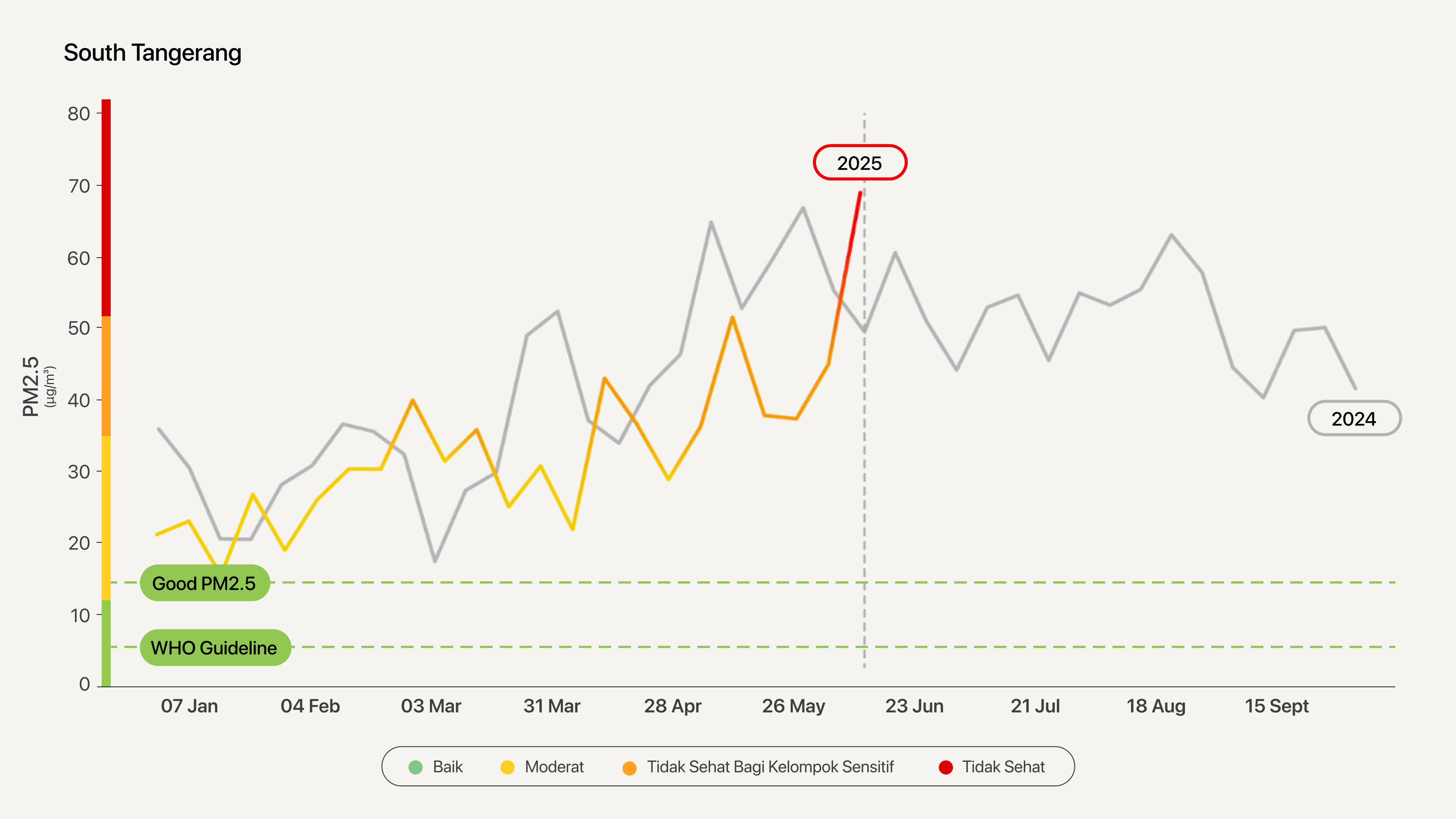
On average, weekly trends show an increase from January to May. However, the first week of June indicates an Unhealthy level compared to the rest of the week. Additionally, the grey line represents the average from last year, where the air quality consistently remains above the Good level and often reaches the Unhealthy level. For this year, the pattern is likely to be similar, projecting to the grey line where air quality worsens during this period.
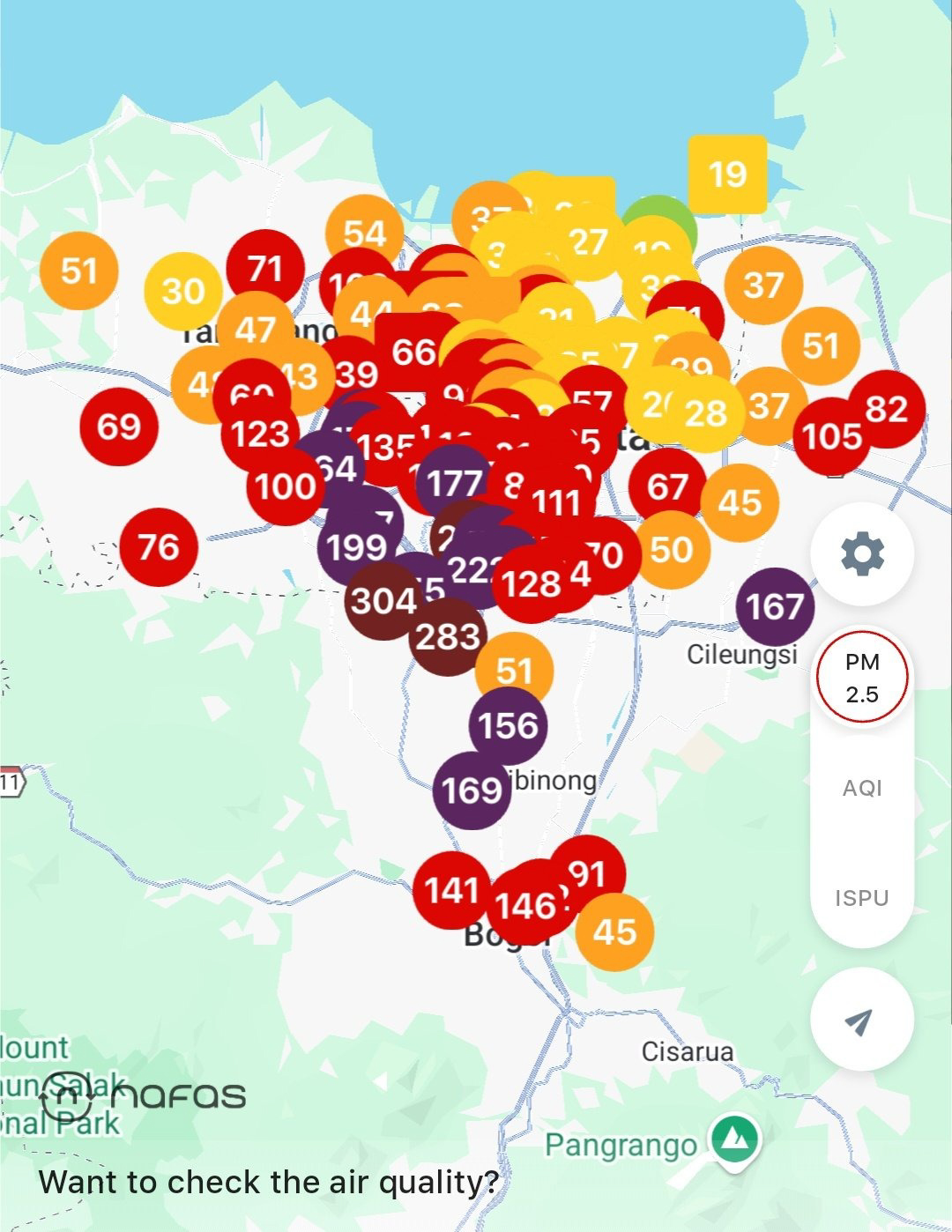
The decrease in rainfall and wind patterns during the dry season can trap pollutants, leading to a buildup in certain areas and a trend of poor air quality from evening into the morning. Very Unhealthy and Hazardous air quality levels, indicated by the colors purple and brown, are recurring. This situation should serve as a serious warning to residents about the potential health risks associated with significant air pollution.
Impact on Public Health
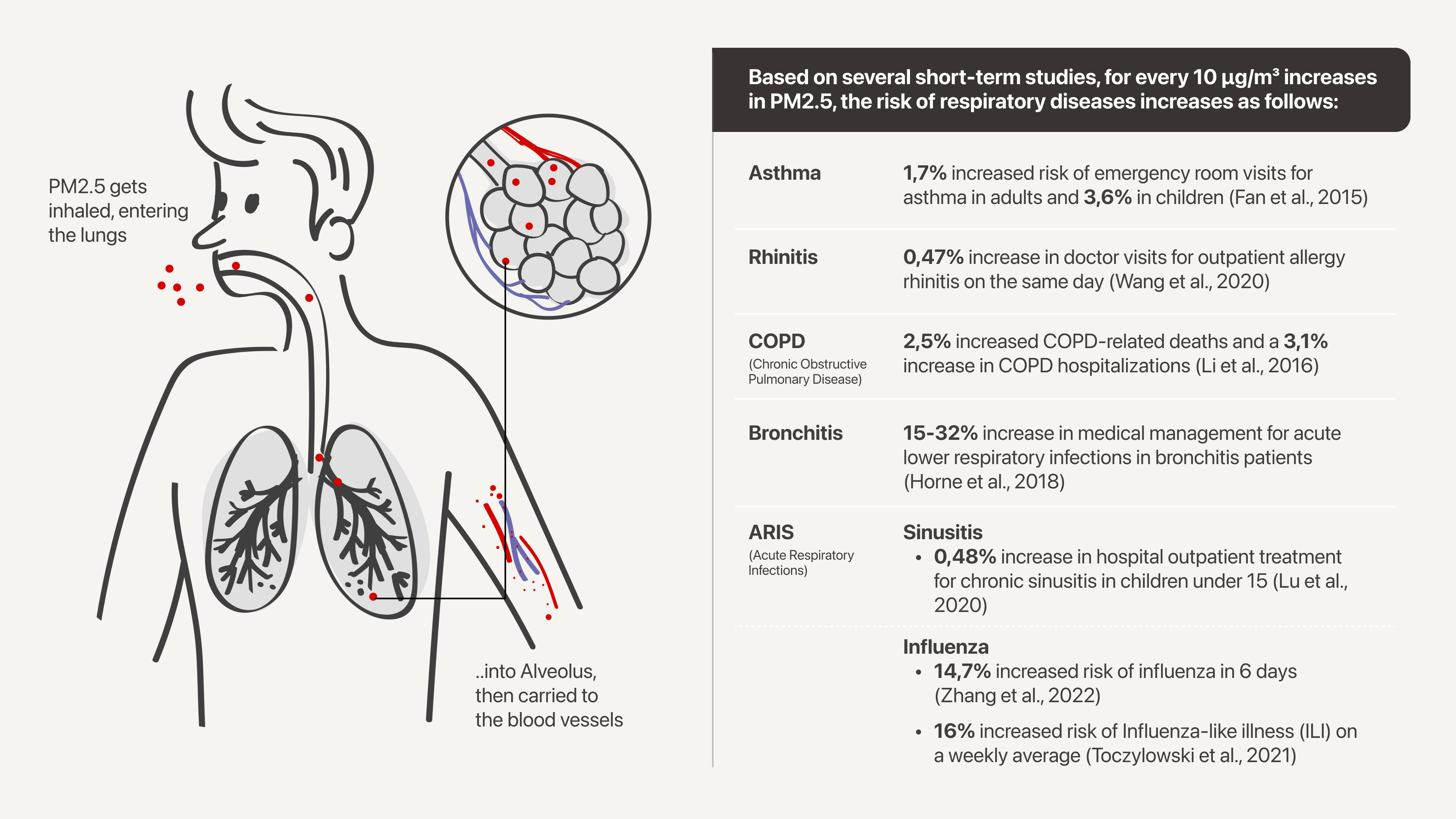
Breathing in polluted air is bad for your health, as harmful pollutants enter your body and are transported from your lungs to other parts of your body. High pollution levels are particularly harmful to vulnerable individuals such as babies, children, pregnant women, the elderly, and those with existing health issues, as these sensitive groups have a higher risk of becoming ill. Additionally, poor air quality can trigger other health issues such as respiratory and cardiovascular diseases.
Quick steps to protect yourself in the bad air season
To stay healthy during periods of poor air quality, consider these protective measures:
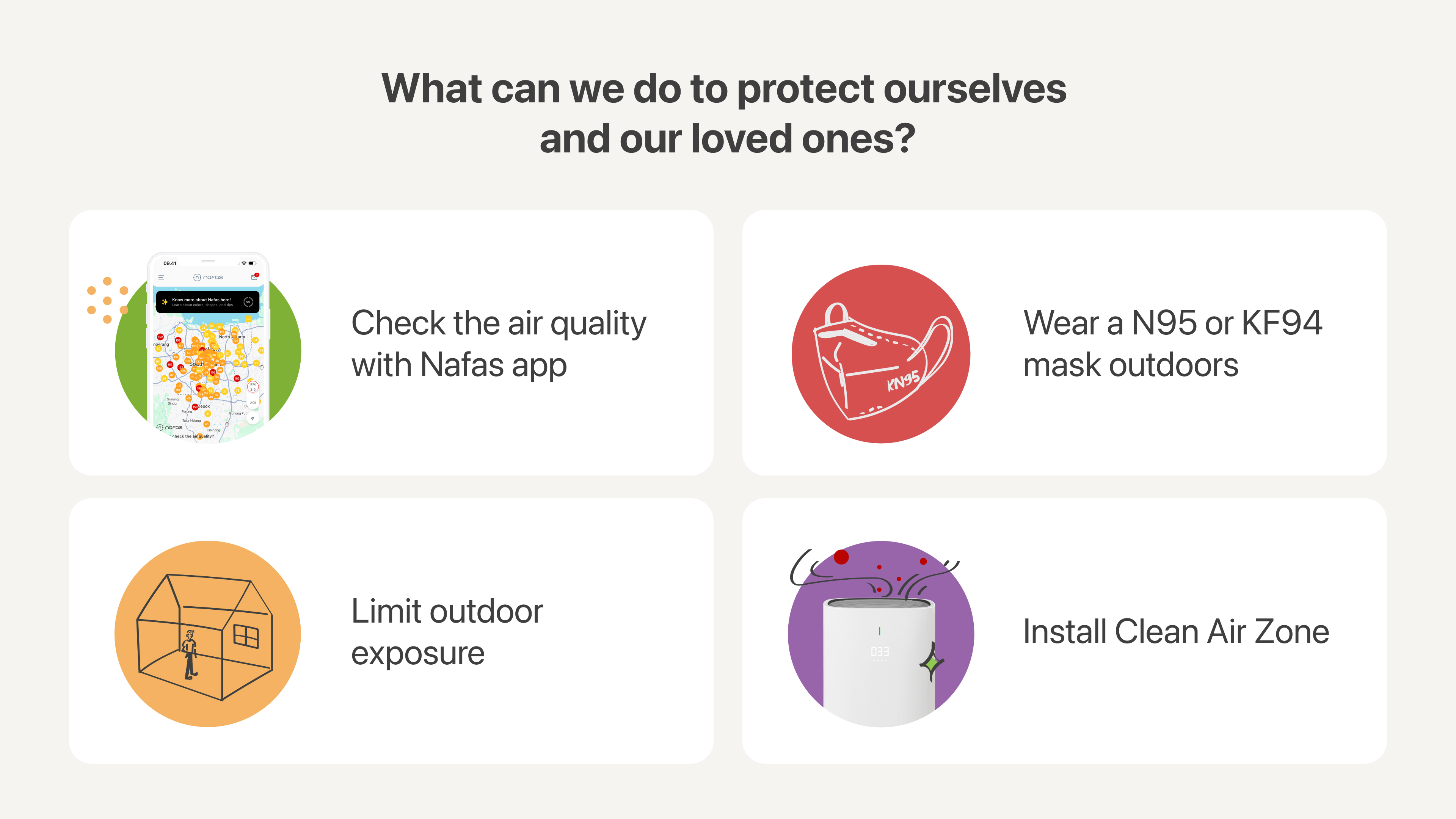
- Monitor Air Quality: Check the air quality before you go! Simply open the nafas app to get the information about the surrounding air quality
- Wear a Mask Outdoors: N95 or KF94 masks are effective as air filtration during outdoor activities.
- Limit Outdoor Exposure: Avoid outdoor activities when pollution levels are high.
- Install Clean Air Zone: Install Clean Air Zone in the workplace, school, gym, or any indoor place because up to 99% of bad air from the outdoors could be polluted the indoor air.
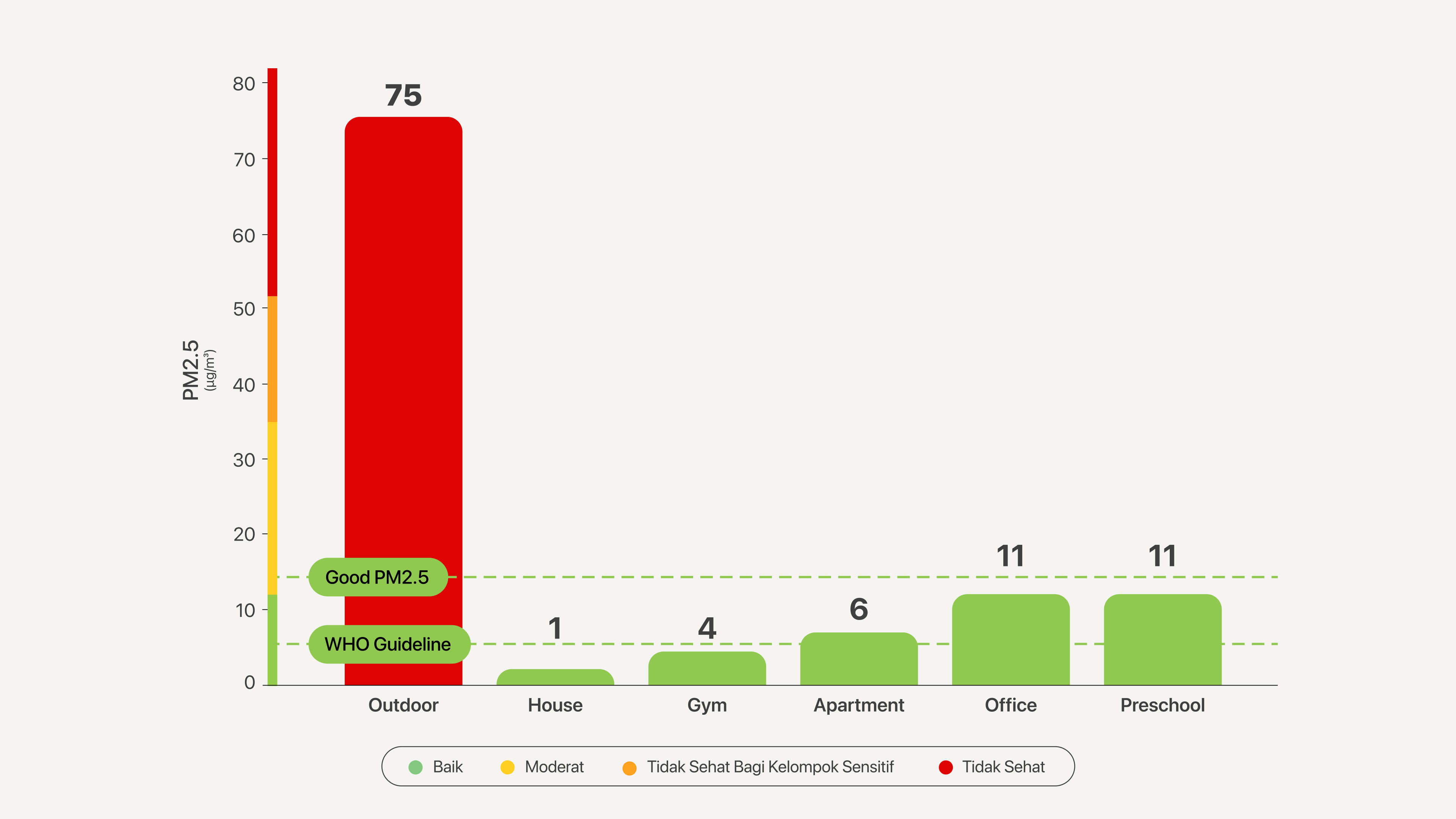
Clean Air Zone can help ensure a healthier environment despite challenging outdoor conditions. Utilizing a Clean Air Zone system during periods of high PM2.5, like those potentially seen in the summer months, according to the data, allows buildings to maintain good indoor air quality. As the charts above, CAZ can maintain up to 90% good indoor air quality better than the outdoors.
Don’t let bad air season affect your health and the people we care about, Clean Air Zone protects your healthy air inside!
